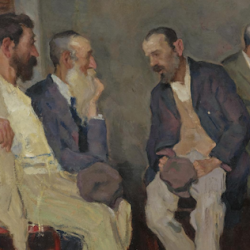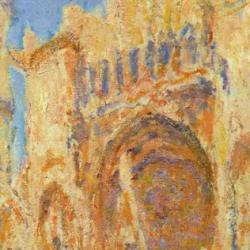Timothy Carson thinks the number one is a “giddy” number, “delighted in its unity, ecstatic about its own irreducible, undivided self” (The Square Root of God, 10).
It has good reason to be giddy. It is “always a component of, a part of everything else, no matter how complex it gets.” That’s a neat gig: “You are totally complete in and of yourself, yet at the same time related to everything else, making everything else possible.” It’s the factor that can never be factored out (10).
Like God, Carson says: “Like the number 1, God is an irreducible and undivided unity, a singularity that is the simplicity behind every complexity. This oneness is the foundational and undivided mystery within the cosmos, the harmony centering human communities, the common thread uniting diver cultures and nations, the interior peace of an undivided mind” (13).
That works, but Carson wanders off when he asks, What then of the Christian confession of Trinity? From Carson’s angle, the problem is “an inconsistency between its theological and mathematical dimension.” Father, Son, and Spirit are thought of as sequential and cumulative, such that we can add the Son and Spirit to the Father to equal the one Triune God. Rather, he says, “if the creator is unrivaled as indivisible number 1, it can only add itself to others to make them what they are. Others exist only because number 1 provides their basis. . . . others exist only insofar as they participate in number 1” (16). To get the Trinity right, he suggests, we need to recognize that “God is the unity, the indivisible number which is a part of every other number” (17).
He suggests an equation to capture something of the Trinity. On the left side is God, on the right is everything else; God is the singular and infinite reality on the left side of the equal sign, and everything on the right side exists only by virtue of participation in that singular infinity.
That includes the Son and Spirit: “God is one and God equals everything. And God equals God participating in and being a part of everything else, including the son and the spirit.” The Son is 1 infinite + 2, the Spirit is 1 infinity + 3: “The son and spirit have been assigned prime numbers for a reason; they contain no divisors other than themselves and the number 1” (18).
Carson claims at the beginning of his book that his vision of the 1 God is panentheistic rather than pantheistic: “God is in all thing; not equivalent with, but in. This allows for participation, freedom, purpose, creativity, and innovation” (8). But he doesn’t stick with that distinction. In discussing the Trinity, he makes the one God and “everything” equal, occupying opposite sides of an equal sign. The Son and Spirit are just two items along with everything else that participates in God.
Carson wants to offer a “theological and mathematical way to free ourselves from an untenable formula that we have felt constrained to defend for too many centuries” (18). But that liberation is a liberation from orthodoxy. Perhaps at bottom, the vagueness of his basic theology distorts things from the outset: God is “the purposeful sacred power that creates and animates the universe,” a fuzzy formulation, even if he adds, weakly, that “Jesus informs my faith in highly significant ways” (8).














